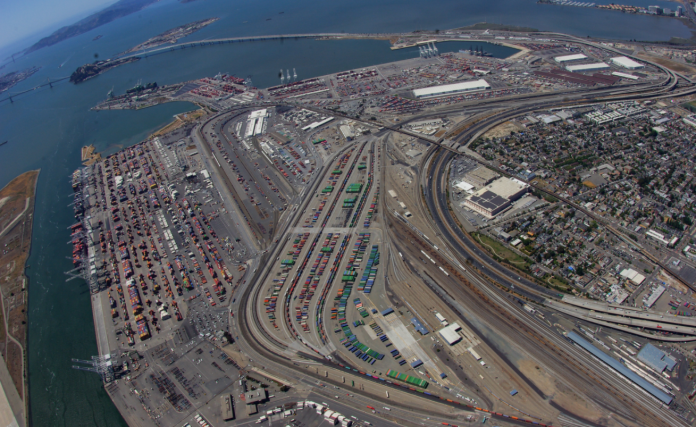The Port of Oakland has announced its partnership with the US Department of Agriculture (USDA) to clear bottlenecks that impede outbound shipments, in order to relieve agricultural exports.
As the global shipping logjam has created dockside congestion of empty containers that are affecting the transport of Oakland exports, a temporary 89,030 m2 waterfront yard is planned, dedicated to export distribution.
USDA would fund 60% of start-up costs for Oakland’s export container depot, according to port officials.
“As a major hub for the export of California’s and America’s fresh fruits, nuts, dairy and frozen proteins, we appreciate the Administration’s efforts to ease shipping delays and costs for agricultural exporters,” commented Port of Oakland executive director Danny Wan.
Agricultural exporters will have exclusive access to pre-cool refrigerated containers for loading perishable products and will also receive direct incentives from the USDA to utilise the pop-up yard. In addition, truckers can bypass marine terminals.
“Covid-19 revealed vulnerabilities across our supply system, both at our ports and in the agricultural sector,” stated US Agriculture secretary Tom Vilsack, who went on to add that this partnership builds on the two parties’ approach to addressing challenges within the supply chain.
The Californian port is one of the most important gateways for US exports, especially farm goods, due to its proximity to the fertile California Central Valley.
Traditionally, exports have accounted for half of the port’s loaded container business. In 2021, however, outbound shipments fell to 45% of Oakland’s volume, “as a result of the supply chain woes that hampered most US ports.”
In addition to the pop-up yard, the port is planning for long term and permanent facilities, which are expected to provide another 485,623 m2 of capacity for cargo movements and processing.
“With environmental-conscious planning and investment, the port can add additional capacity to support goods movement with next generation of electric and clean energy equipment,” said Wan.







